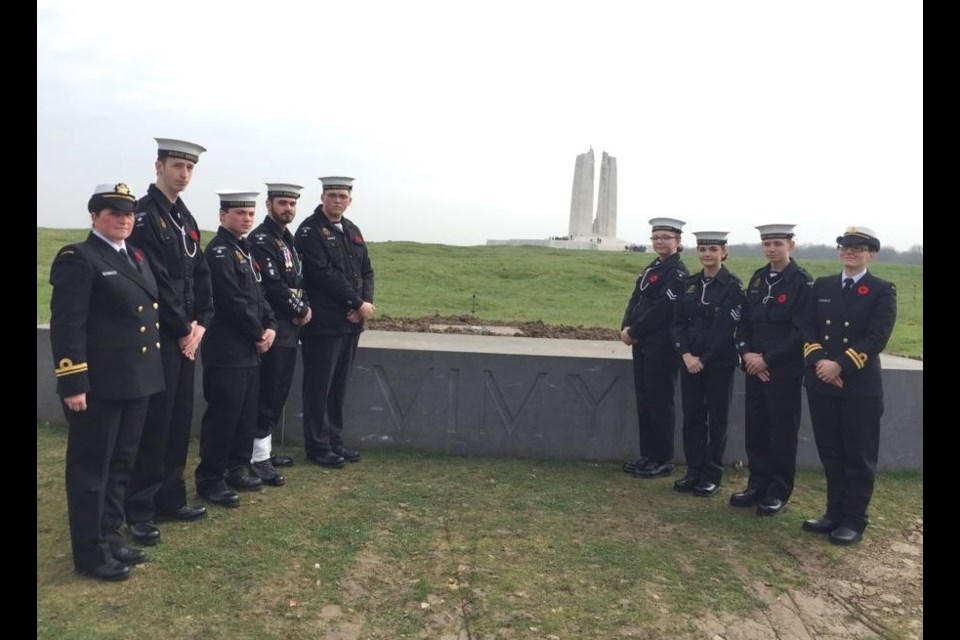March Break is a busy travel period for many, but for several youth groups in North Bay, it’s been an emotional and educational experience.
This week, three groups had the opportunity to visit the Vimy memorial on the 100th anniversary in what many say is the World War I battle that gave birth to our nation and our identity.
Ecole Publique Secondaire Odyssee along with the 547 Canadian Canuck Squadron and the Royal Canadian Sea Cadet Corps Brilliant are also visiting other historical war sites across Northern Europe.
“I’ve had a lot o family die in the war, so I’ve seen a lot of names from my family. A lot of them, their relative are still living and I have pictures of their names on memorials to show them back home,” shared Michael Chessell of the local Royal Canadian Sea Cadet Corps.
The tour was organized by their executive officer Lorie Hall. She says it is always moving, visiting historical war sites. When in Ypres Belgium, the group of seven cadets and three staff were given a special honour while at the Menin Gate. Every evening at 8 p.m., since the end of the Second World War, the site holds a special ceremony.
“We had arranged to lay a wreath and when we arrived they asked us to be the honour guard and it was a really special moment for us,” added Hall.
Two of the North Bay groups that began their journey in Berlin are wrapping up in France on Saturday. The Air Cadets are touring France and England.
“For me, it was being able to return and touch the roots of my origin. It’s been over a hundred years since someone in my family has returned to Europe, so it was important for me to come back,” explained Senior Sea Cadet Noah Turcotte.
The attack on Vimy Ridge was launched on April 9, 1917.
Victory was achieved after four days of fierce fighting. It is significant because it was the first military offensive when all four divisions of the Canadian Corps fought together.
Almost 3,600 Canadian soldiers were killed.



